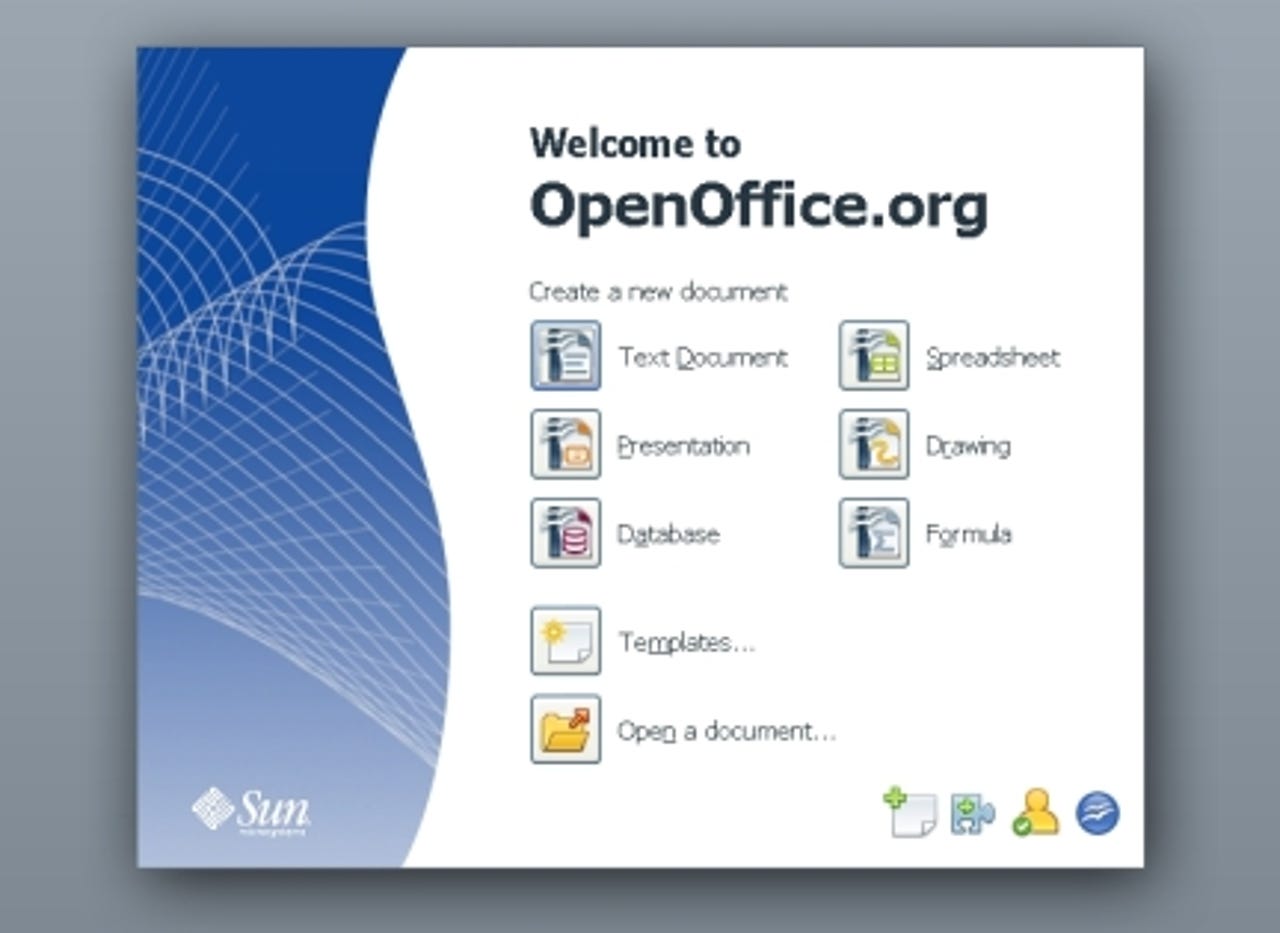Gallery: Enhancements for OpenOffice 3


One major reason for the significance of OpenOffice 3 is the fact that it can run natively on the Mac — previously, it needed to be run within a windowed X11 session. But the suite has had many other enhancements, one of which is the welcome screen shown in this screenshot.
Captions by David Meyer, ZDNet.co.uk. Screenshots from OpenOffice.org. For more on OpenOffice 3, read Christoper Dawson's blog.
While OpenOffice 3 can read OOXML documents, however, it cannot create or save to them.
It is now possible to search for updates to extensions from within OpenOffice, and the extension functionality is now presented as an integral part of the main suite. The objective in taking this approach, according to OpenOffice.org, is to keep the core suite as lightweight as possible, while making it easy for functionality to be added by those who need it.
The PDF export facility that has been integrated into the last few incremental releases of OpenOffice has now been upgraded. The tool now gives the user more control in choosing how they want the resulting PDF file to be presented — for example, opening on a specific page, or opening in thumbnail view.
In the picture above, the tool is shown running on the native Mac OS X version of OpenOffice.org.
Icons across the suite have been overhauled to give them a fresher look.